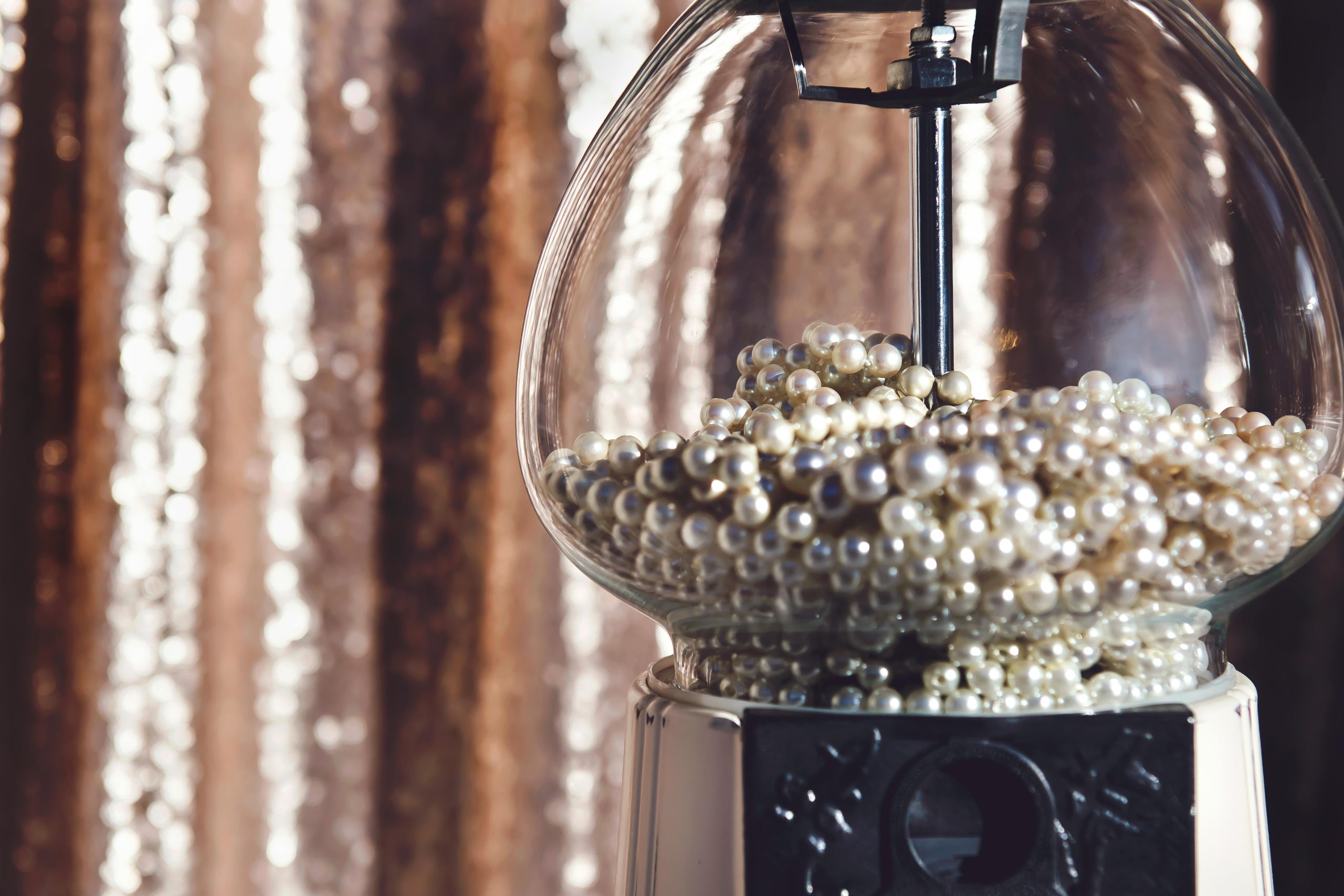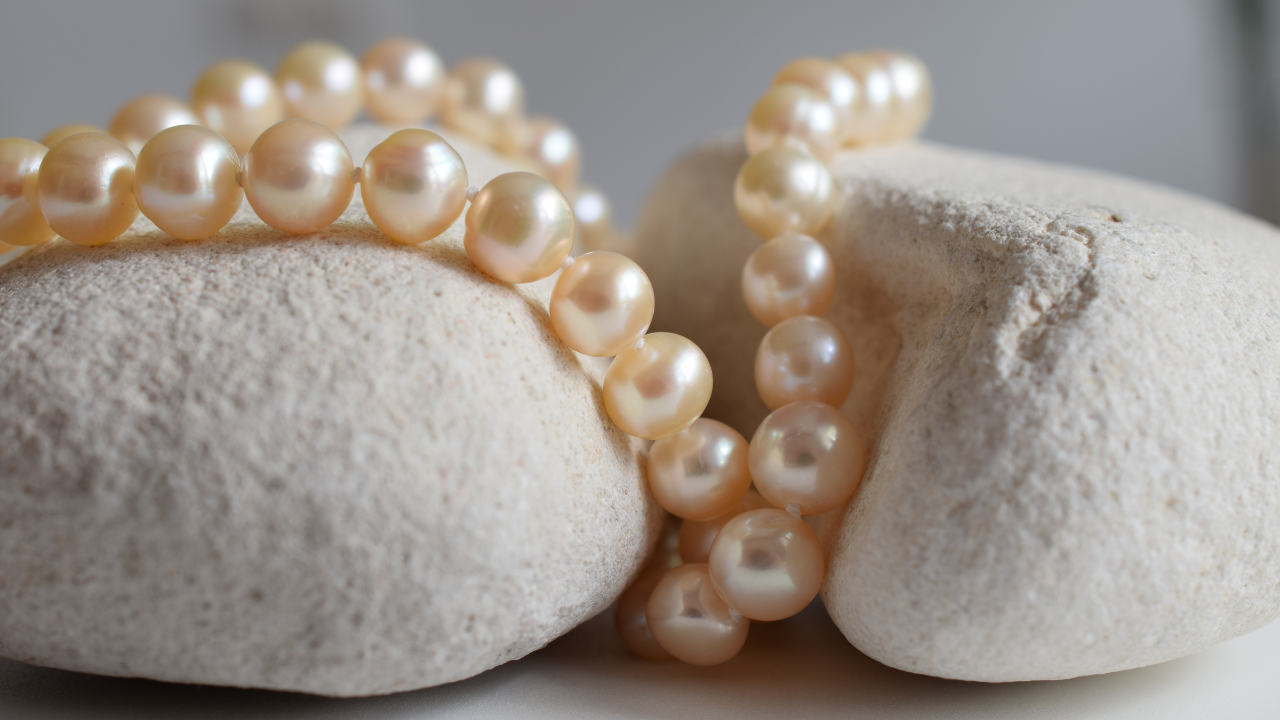Pearls stand apart from all other birthstones because they aren’t formed deep in the earth like diamonds, emeralds, and sapphires. Instead, these shimmering gems come from the sea, created by living creatures. As the birthstone for June, pearls carry deep meanings of purity and innocence while displaying a gentle rainbow of colors that has captivated people since ancient times. Let’s explore what makes pearls so special and why they have been treasured across cultures for thousands of years.

The Unique Beauty of Pearls
Unlike the sparkle of diamonds or the bold colors of emeralds and rubies, pearls have a soft, glowing quality called luster. This gentle shine comes from the way light plays on their surface and reflects from within the pearl’s layers. While many people think of pearls as simply white, they actually come in many colors:
- Creamy white (the most common)
- Pink
- Silver
- Cream
- Gold
- Green
- Blue
- Black
- Rainbow (showing many colors in one pearl)
The color of a pearl depends on the type of mollusk that made it and the water where it grew. Pearls from different parts of the world show different natural colors. This variety gives pearl lovers many beautiful options when choosing pearl jewelry.
June’s Special Birthstones
People with June birthdays are lucky to have three birthstones:
- Pearl – The traditional and most well-known June birthstone
- Moonstone – Known for its floating light effect
- Alexandrite – A color-changing gem that appears green in daylight and red-purple in incandescent light
While all three are beautiful in their own way, pearls remain the most popular choice for June birthday gifts. There’s something timeless about pearl jewelry that keeps it in style year after year.
How Pearls Form: Nature’s Miracle
The story of how pearls form is fascinating. Unlike gemstones that form through heat and pressure in the earth, pearls grow inside living creatures called mollusks—mainly oysters and mussels.
When a tiny irritant (like a grain of sand) gets inside the mollusk’s shell, the creature protects itself by covering the irritant with layers of a substance called nacre (pronounced NAY-ker). Layer after layer of nacre builds up around the irritant, eventually forming a pearl. This process can take anywhere from 6 months to several years.
Natural pearls form when this happens by chance in wild mollusks. These are extremely rare and valuable. Most pearls today are cultured pearls, where pearl farmers carefully place an irritant inside the mollusk to start the pearl-growing process.
Pearls Through History
Pearls might be the oldest gemstone known to humans. Long before people figured out how to mine diamonds or cut emeralds, they were finding natural pearls in oysters gathered for food.
Ancient Times and Pearl Love
In ancient times, pearls were incredibly valuable:
- Greek Myths: Greeks believed pearls were the tears of the gods
- Ancient Romans: Upper-class Roman women wore pearls as a symbol of wealth
- Ancient India: Pearls were associated with the moon and believed to bring good luck
- Ancient China: Pearls were thought to protect the wearer from fire and dragons
Cleopatra is said to have dissolved a pearl in vinegar and drunk it to show her wealth to Marc Antony. While this story might be just a legend, it shows how valuable pearls were in the ancient world.
The Meaning and Symbolism of Pearls
Throughout history, pearls have carried special meanings:
Purity and Innocence
The clean, white appearance of pearls has long connected them to purity and innocence. This is why pearls are traditional gifts for brides and babies. When someone gives pearl jewelry as a gift, they are often symbolically wishing the receiver a pure and innocent life.
Wisdom Through Experience
Because pearls form when an oyster turns a problem (the irritant) into something beautiful, they often symbolize wisdom gained through overcoming challenges. The pearl represents the beautiful outcome that can come from life’s difficulties.
Humility and Integrity
Unlike flashy gemstones, pearls have a quiet, understated beauty. This has connected them to qualities like humility, integrity, and loyalty. People who prefer pearl jewelry often appreciate these gentle virtues.
Birthstone Calendar and Pearl’s Place
Each month has its own special birthstone:
- January: Garnet
- February:Amethyst
- March: Aquamarine
- April: Diamond
- May: Emerald
- June: Pearl, Alexandrite, Moonstone
- July: Ruby
- August: Peridot
- September: Sapphire
- October: Opal, Tourmaline
- November: Topaz, Citrine
- December: Turquoise, Tanzanite, Blue Topaz, Zircon
Among these gems, pearls stand out as the only birthstone formed by living creatures rather than geological processes.
Pearls and Moonstone: June’s Lunar Connection
It’s interesting that two of June’s birthstones—pearls and moonstone—have strong connections to the moon:
- Pearls have been associated with the moon in many cultures because of their round shape and soft glow
- Moonstone shows a floating light that moves across the stone like moonlight on water
This lunar connection makes sense for June, which often contains the summer solstice—when the relationship between earth and sun shifts to bring longer days and shorter nights. The moon-connected birthstones might represent balance during this time of change.
Alexandrite: June’s Color-Changing Wonder
The third June birthstone, alexandrite, is one of the rarest gems in the world. Discovered in the Ural Mountains of Russia in the 1830s, it was named after Czar Alexander II.
What makes alexandrite special is its ability to change color:
- In daylight or fluorescent light, it appears green to bluish-green
- In incandescent light (like from a lamp), it turns red to purplish-red
This dramatic color change happens because of the way alexandrite absorbs light. Good quality alexandrite is extremely rare and valuable, sometimes even more expensive than diamonds of the same size.
Pearl Colors and Their Meanings
In color psychology, different pearl colors carry different meanings:
- White Pearls: Purity, new beginnings
- Black Pearls: Mystery, wisdom, protection
- Pink Pearls: Love, compassion, feminine energy
- Gold Pearls: Prosperity, success, warmth
- Blue Pearls: Tranquility, truth, courage
- Green Pearls: Balance, growth, harmony
Popular Pearl Jewelry Types
Pearls appear in many beautiful jewelry forms:
Pearl Necklaces
The classic pearl necklace remains one of the most popular ways to wear pearls. Different lengths work for different occasions:
- Collar (12-13 inches): Sits high on the neck
- Choker (14-16 inches): Sits at the base of the neck
- Princess (17-19 inches): Falls at or just below the collarbone
- Matinee (20-24 inches): Falls between the collarbone and bust
- Opera (28-35 inches): Falls at or below the bust
- Rope (45+ inches): Can be wrapped multiple times

Pearl Earrings
From simple pearl studs to elaborate dangles, pearl earrings complement almost any outfit and face shape.
Pearl Bracelets
Pearl bracelets range from single strands to multi-row cuffs, sometimes mixed with gold or silver beads.
Pearl Rings
Pearl rings make unexpected and beautiful statement pieces, though pearls in rings need extra care since they’re more exposed to bumps and chemicals.
The Timeless Appeal of Pearls
Whether you’re drawn to pearls because they’re your birthstone, you love their soft luster, or you connect with their symbolism of purity and wisdom, these gems have an enduring appeal. From ancient treasuries to modern fashion runways, pearls continue to captivate us with their gentle beauty and rich history.
For those interested in color psychology, pearls represent the perfect balance of all colors—offering a calm, centering energy while still connecting us to our emotions and intuition. It’s no wonder these gifts from the sea have maintained their status as beloved gems throughout human history.